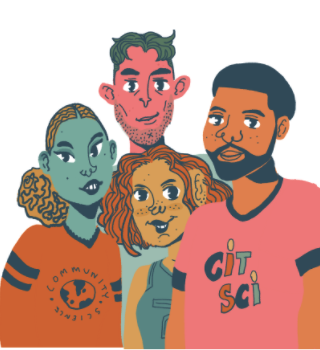The concept of noise pollution is central to the NOISE project. A primary goal of our work is to counter the adverse effects of noise pollution, particularly in communities most vulnerable to this pollution. As such, it is important to define noise pollution, as we cannot adequately address issues of […]
App Featured
This is a concept pulled from the Community Coding Codebook. In the context of our coding, we define this as fragility, sensitivity, and/or shutting down in the face of change or confrontation. We apply this code when individuals demonstrate these behaviors in reaction to discussions about race and/or equity. This is […]
Equity and equality are two terms that are used frequently in justice, equity, inclusion, and diversity work. Both of these terms revolve around individual and population needs and the resources that meet those needs. Although they may sound similar there are some key differences that are important to keep in […]
The purpose of the NOISE project is written in the first pages of our 2019 NSF report, which states: “The goal of our community-led project… is to co-create a national community science project focused on noise pollution with the goal of increasing inclusion and equity in STEM, while building capacity […]
The Noise Project brings together the goals of furthering science and furthering equity. Our team carries out Community-based Participatory Research (CBPR), which is a method of research conducted at the community level by engaging with individuals and organizations in the community to further science. Traditionally, the focus of CBPR has […]
Where you live is often determined by your socioeconomic status and/or race. In the United States, people of color have been subjected to years of racial segregation. Policies such as “redlining” ensured that black people would only have access to dense, low-income areas (red zones) while white people (who were […]
Noise pollution can have a major impact on the environment. One ecosystem that exemplifies the harsh effects of noise pollution is marine life. Life underwater can naturally be pretty loud. Water particles are more densely packed than air particles so sound travels faster. Over time, marine creatures have adapted to use […]
The NOISE project is also interested in the ways sound can improve our communities’ health and quality of life. As this blog post explains, people living in areas with more birds, trees, and shrubs are less likely to experience stress, anxiety, and depression, and listening to sounds such as birdsongs can actually […]
All of this information about noise pollution can be really overwhelming—which is why it’s also so important to educate ourselves about how we can combat noise pollution. Some researchers have suggested an individual approach to combating noise pollution. In this Ted Talk, Dr. Mathias Basner, a professor in the Department […]
Noise pollution affects you and those around you in a wide variety ways, even some that you may not have noticed! One of the most known health impacts is on hearing. Noise Induced Hearing Loss (NIHL) is very likely in areas with high levels of noise pollution, especially in areas […]
The Noise Project aims to enhance equity in collaborations between science institutions and communities. Equity is so important to our collaboration that we include it in our co-created Community Review Board Agreement of non-negotiables that guide research and evaluation in our communities. In order for researchers to partner with community […]











